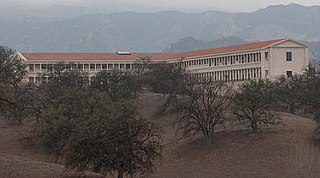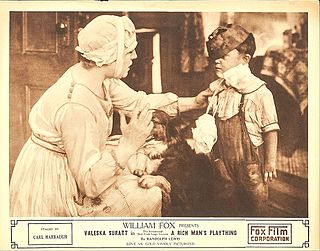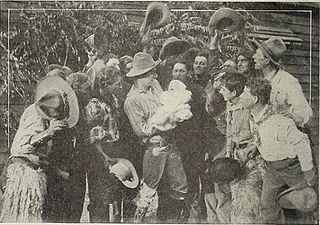
Nitrocellulose is a highly flammable compound formed by nitrating cellulose through exposure to a mixture of nitric acid and sulfuric acid. One of its first major uses was as guncotton, a replacement for gunpowder as propellant in firearms. It was also used to replace gunpowder as a low-order explosive in mining and other applications. In the form of collodion it was also a critical component in an early photographic emulsion, the use of which revolutionized photography in the 1860s.

Film preservation, or film restoration, describes a series of ongoing efforts among film historians, archivists, museums, cinematheques, and non-profit organizations to rescue decaying film stock and preserve the images they contain. In the widest sense, preservation assures that a movie will continue to exist in as close to its original form as possible.

Smokeless powder is a type of propellant used in firearms and artillery that produces less smoke and less fouling when fired compared to black powder. Because of their similar use, both the original black powder formulation and the smokeless propellant which replaced it are commonly described as gunpowder. The combustion products of smokeless powder are mainly gaseous, compared to around 55% solid products for black powder. In addition, smokeless powder does not leave the thick, heavy fouling of hygroscopic material associated with black powder that causes rusting of the barrel.

A lost film is a feature or short film in which the original negative or copies are not known to exist in any studio archive, private collection, or public archive. Films can be wholly or partially lost for a number of reasons. Early films were not thought to have value beyond their theatrical run, so many were discarded afterward. Nitrate film used in early pictures was highly flammable and susceptible to degradation. The Library of Congress began acquiring copies of American films in 1909, but not all were kept. Due to improvements in film technology and recordkeeping, few films produced in the 1950s or beyond have been lost.
Preservation of documents, pictures, recordings, digital content, etc., is a major aspect of archival science. It is also an important consideration for people who are creating time capsules, family history, historical documents, scrapbooks and family trees. Common storage media are not permanent, and there are few reliable methods of preserving documents and pictures for the future.

The Packard Humanities Institute (PHI) is a non-profit foundation, established in 1987, and located in Los Altos, California, which funds projects in a wide range of conservation concerns in the fields of archaeology, music, film preservation, and historic conservation, plus Greek epigraphy, with an aim to create tools for basic research in the Humanities.
A film base is a transparent substrate which acts as a support medium for the photosensitive emulsion that lies atop it. Despite the numerous layers and coatings associated with the emulsion layer, the base generally accounts for the vast majority of the thickness of any given film stock. Since the late 19th century, there have been three major types of film base in use: nitrate, acetate, and polyester.

Spontaneous combustion or spontaneous ignition is a type of combustion which occurs by self-heating, followed by thermal runaway and finally, autoignition. It is distinct from pyrophoricity, in which a compound needs no self-heat to ignite.

Cellulose acetate film, or safety film, is used in photography as a base material for photographic emulsions. It was introduced in the early 20th century by film manufacturers and intended as a safe film base replacement for unstable and highly flammable nitrate film.

Upstream is a 1927 American comedy film directed by John Ford. A "backstage drama", the film is about a Shakespearean actor and a woman from a knife-throwing act. The film was considered to be a lost film, but in 2009 a print was discovered in the New Zealand Film Archive.
On August 10, 1965, a fire erupted in Vault 7, a storage facility at the Metro-Goldwyn-Mayer studio (MGM) backlot in Culver City, California. It was caused by an electrical short that ignited flammable stored nitrate film. The initial explosion reportedly killed at least one person, and the resulting fire destroyed the entire contents of the vault, which included archived prints of silent and early sound films produced by MGM and its predecessors. The only known copies of hundreds of films were destroyed.

The Soul of Broadway is a 1915 American silent crime drama film produced and distributed by the Fox Film Corporation and directed by Herbert Brenon. Popular vaudeville performer Valeska Suratt starred in the film which was also her silent screen debut. The Soul of Broadway is now considered lost. It is one of many silent films that were destroyed in a fire at Fox's film storage facility in Little Ferry, New Jersey in July 1937.

A Rich Man's Plaything is a 1917 American silent drama film produced and distributed by the Fox Film Corporation. The film starred Valeska Suratt in her final film role. A Rich Man's Plaything is now considered lost. It is one of many silent films that were destroyed in a fire at Fox's film storage facility in Little Ferry, New Jersey in July 1937.

Life's Shop Window is a 1914 American silent drama film directed by J. Gordon Edwards and starring Claire Whitney and Stuart Holmes. It is a film adaptation of the 1907 novel of the same name by Annie Sophie Cory. The film depicts the story of English orphan Lydia Wilton (Whitney), and her husband Bernard Chetwin (Holmes). Although Wilton's marriage is legitimate, it was conducted in secret, and she is accused of having a child out of wedlock. Forced to leave England, she reunites with her husband in Arizona. There, she is tempted by infidelity with an old acquaintance, Eustace Pelham, before seeing the error of her ways and returning to her family.

It Is the Law is a 1924 American silent mystery film directed by J. Gordon Edwards and starring Arthur Hohl, Herbert Heyes, and Mona Palma. It is a film adaptation of the 1922 Broadway play of the same name by Elmer Rice, itself based on a novel by Hayden Talbot. The film depicts the story of Ruth Allen (Palma), who marries Justin Victor (Heyes) over competing suitor Albert Woodruff (Hohl). Seeking revenge for this slight, Woodruff fakes his own death by killing a drifter who resembles him, and frames Victor for the murder. Woodruff attempts to renew his courtship of Allen by using an assumed identity, but she sees through his disguise. Once Victor is freed from prison, he kills Woodruff and goes free because a conviction would constitute double jeopardy.

Milton R. Shefter is a Los Angeles-based film and media-asset archivist and preservationist. He is best known for the creation, design, and management of the extensive Paramount Pictures Asset Protection Program, and for co-authoring the 2007 report from the Science and Technology Council of the Academy of Motion Picture Arts and Sciences, The Digital Dilemma, as well as its 2012 followup, The Digital Dilemma 2.
The conservation and restoration of film is the physical care and treatment of film-based materials. These include photographic film and motion picture film stock.

The Net is a 1923 American silent melodrama film directed by J. Gordon Edwards and starring Barbara Castleton, Raymond Bloomer, and Albert Roscoe. It is a film adaptation of the 1919 Broadway play of the same name, itself based on the novel The Woman's Law by Maravene Thompson. The film depicts the story of Allayne Norman (Castleton) and her husband Bruce (Bloomer). Bruce commits murder and convinces Allayne to help him blame the crime on a man suffering from amnesia (Roscoe). After Bruce dies and the man recovers, he marries Allayne.

The Witch is a lost 1916 American silent drama film directed by Frank Powell, produced by Fox Film Corporation, and starring Nance O'Neil, Alfred Hickman, and Frank Russell. Based on the 1903 play La Sorcière by French dramatist Victorien Sardou, this adaptation portrayed the challenges facing a young woman living in a territory in Mexico wracked by military and social unrest. It was filmed at Fox's studio in Fort Lee, New Jersey, where a Mexican village was constructed on the company's backlot and used as the principal set for outdoor scenes.

On the morning of June 13, 1914, a disastrous fire and a series of related explosions occurred in the main film vault of the Lubin Manufacturing Company in Philadelphia, Pennsylvania. Several possible causes for the blaze were cited at the time, one being "spontaneous combustion" of highly flammable nitrate film, which was the motion picture industry's standard medium for cameras throughout the silent era and for the first two decades of "talking pictures". Millions of feet of film were consumed in the flames, including most of the master negatives and initial prints of Lubin's pre-1914 catalog, several of the company's recently completed theatrical prints ready for release and distribution, a considerable number of films produced by other studios, inventories of raw and stock footage, hundreds of reels documenting historic events that occurred between 1897 and early 1914, as well as other films related to notable political and military figures, innovations in medical science, and professional athletic contests from that period. While this fire was not a decisive factor in Lubin's decline and bankruptcy by September 1916, costs associated with the disaster only added to the corporation's mounting debts, which led to the closure or sale of its remaining operations the following year.


















